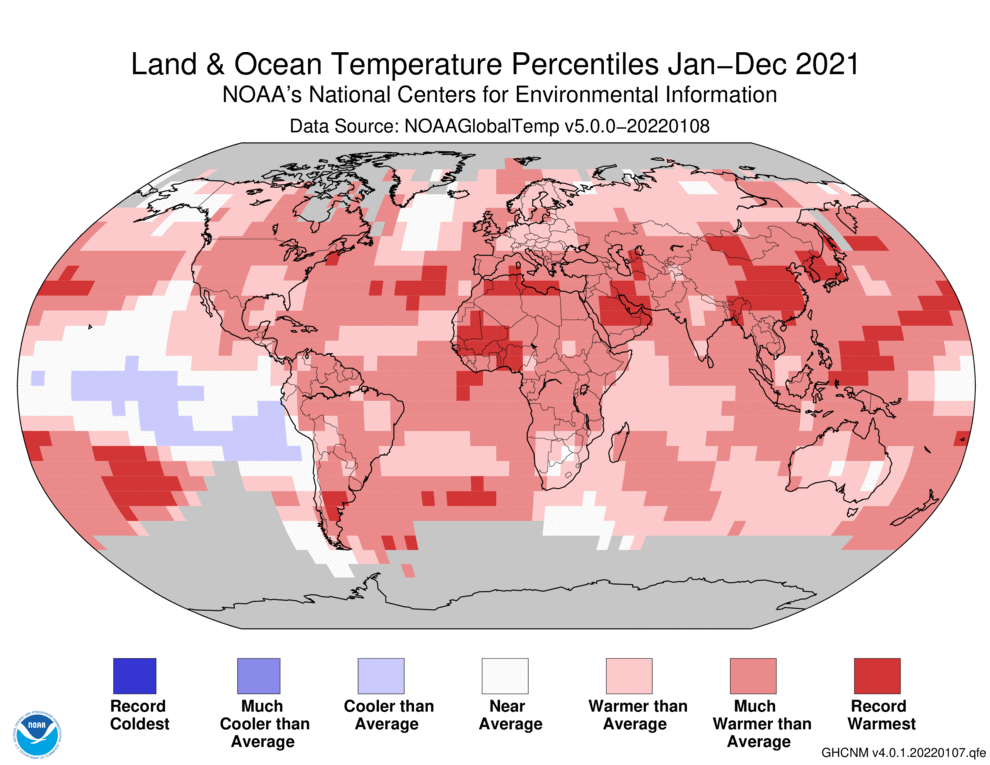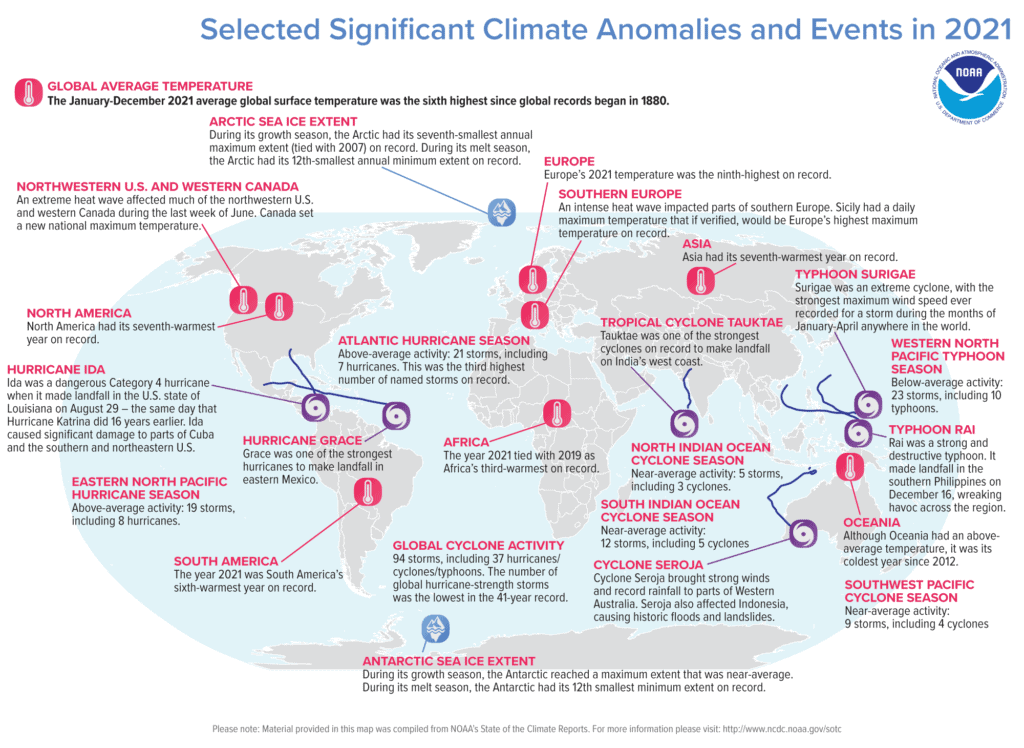Earth had its six hottest year on record in 2021, continuing an alarming trend fueled by the climate crisis, according to several temperature measurements. Two US science agencies, NOAA and NASA, published their calculations for last year’s global temperature, which didn’t exceed the record heat seen in 2016 and 2020, but was still oine of the hottest years in recorded history.

For NASA, 2021 tied with 2018 for sixth warmest, while NOAA put last year in sixth place by itself (based in small differences in how global average temperature is calculated). Researchers believe without a doubt that this is a direct consequence of climate change, and they believe that La Niña, a periodic climate event that naturally cools part of the central Pacific, took some pressure out of last year’s temperatures — otherwise it would have been even hotter.
There were record temperatures in several parts of the world last year, including swaths of South America, south Asia and northern Africa. The Arctic Sea ice kept declining and the oceans registered another record year for heat content. If it weren’t for the heat storage capacity of the oceans, the atmosphere would have warmed faster, scientists agree.
“Eight of the top 10 warmest years on our planet occurred in the last decade, an indisputable fact that underscores the need for bold action to safeguard the future of our country – and all of humanity,” NASA Administrator Bill Nelson said in a statement. “Science leaves no room for doubt. Climate change is the existential threat of our time.”
It’s hot weather all over
Global temperatures are recorded throughout the year through weather stations, ships, and ocean buoys. These measurements are then validated with satellite data. Scientists analyze the measurements using algorithms to deal with uncertainties in the data and quality control and calculate the difference for every year on global average surface temperature.
While 2021 didn’t exceed the record heat seen in 2020 – hotter than 2016 by just a fraction – scientists emphasized that this is yet another demonstration of the long-term global warming that’s being caused by human activity, such as burning fossil fuels. The concentration of carbon dioxide (CO2) in the atmosphere is at levels not seen in the past four million years. Despite the many factors being involved in global climate, the influence of human activity is no longer deniable.

“It doesn’t matter how you do the analysis, it shows you the Earth has warmed quite dramatically,” NOAA climate analysis chief Russell Vose said in a press conference. “Each of the past four decades has been warmer than the one preceding it. “It’s certainly warmer now than at any time in the past 2,000 years, and probably longer.”
Last year had a number of extraordinary signals of the climate crisis. July was the world’s hottest month ever recorded, with Death Valley in California reporting what was likely the hottest temperature ever measured during this month – 54.4ºC. Over 1.8 billion people, a quarter of the world’s population, live in countries that experienced the hottest year on record.
The average global temperature, which has already raised 1ºC above pre-industrial levels, and will likely exceed 1.5ºC by the 2030s or the 2040s, NASA and NOAA agreed. This means that the target agreed by countries in the 2015 Paris Agreement will not be reached. But this doesn’t mean The more the temperature rises, the more we will be affected to extreme weather events.
For Kristina Dahl, senior climate scientist at the Union of Concerned Scientists, the new data is terrifying as “it’s no longer surprising or shocking”. In a statement, she called policymakers to “take decisive action” and implement policies that tackle greenhouse gas emissions. “Failure to act together with the global community will all but ensure more devastating impacts,” she added.






